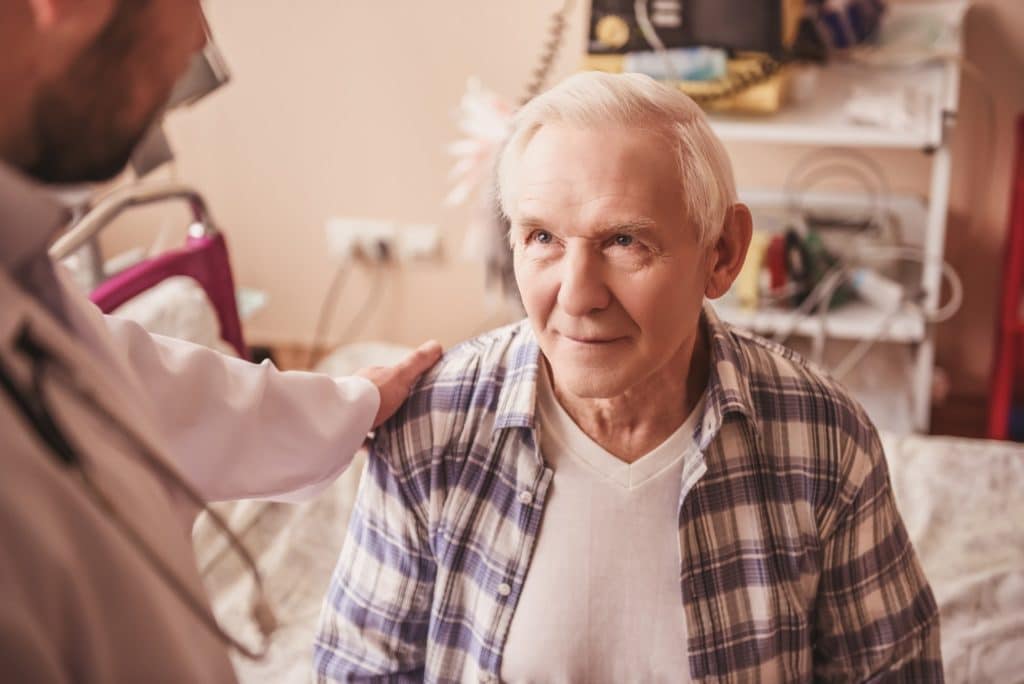
Feel. Better. Now.


About Us
Our Mission
Patient
Resources
Blog
Take charge of your pain with the basics: Diet, exercise and healthy sleep habits.
Pain affects every aspect of your life. It can challenge or change the activities you choose to do, the thoughts you have and even the sleep you get. This is because, in addition to your physical discomfort, pain can affect your mental and emotional health — increasing your stress and frustration, sapping your motivation and activity levels, and contributing to fatigue.
“Pain affects every aspect of our life, not just our physical existence. It can affect how we manage our tasks day-to-day,” says Dr. Tina Ardon, a Mayo Clinic family medicine physician. “It can affect how we interact with our friends, family and coworkers. It has an emotional and mental impact on our lives.” Dr. Ardon says to look at day-to-day activities for clues and tools for how to manage our pain overall. “Someone might have some challenges during their day, maybe not sleep so well, and those are places that we can do some work with to help improve their quality of life.”
There are several positive lifestyle changes you can make to help manage your pain.
“Lifestyle modifications are very important for helping someone manage their overall pain,” says Dr. Ardon. “Two important aspects to think about upfront are a healthy diet and maintaining a healthy weight. These two things can make great impacts on how someone deals with their pain.”
Reduce stress
Pain is a source of stress. And when you feel stress, you may react in ways — such as tensing your muscles and gritting your teeth — that increase your pain. You can prevent this cycle by better managing your stress.
“Pain and stress feed off of each other, and this can lead to a vicious cycle for some patients,” says Dr. ardon “Pain, again, is a physical experience for patients, and stress exacerbates that for a lot of our patients as well. So looking at your day-to-day activities and what are common stressors for you can be a great starting point for helping reduce your stress and, likely, reducing your overall sense of pain as well.”
Write down the things that cause your stress, considering each part of your life, including work, relationships, home, poor health habits, and perfectionism or negative thinking.
“It is often really helpful to have a patient jot down their stressors and their triggers to look at the ways that they can improve those things in their lives,” says Dr. Ardon “For example, if someone were to find that their morning routine is really a big source of stress for them, looking at that routine to figure out if there are ways that they can alter that, perhaps even change some of those activities to the nighttime to alleviate a stress in the morning can show us that that will help reduce their stress and help with their pain overall.”
Then take a hard look at the list and think about ways you can minimize or even eliminate some triggers. If you’re stressed because you have too many obligations on your schedule, decide which ones you can remove. Learn to say no.
Practicing relaxation skills also helps you better manage stress. “Other techniques that can be helpful for reducing your day-to-day stress can be things like breathing exercises, meditation, visual imagery, and relaxation techniques,” says Dr. Ardon.”So learning these things can be helpful for managing those acute moments of stress in your day-to-day life.”
Chronic pain sufferers often look for a source of their pain so they can make changes and reduce their pain levels. For some chronic pain sufferers, making lifestyle changes is one of the best ways to minimize their pain. We share some tips for changing your lifestyle to address your pain here.
1. Reduce Stress
One of the most significant lifestyle changes you can make to impact your chronic pain is to reduce your stress levels. Pain causes stress, and stress causes pain; with better stress management, you can avoid this cycle and manage your pain more successfully. To begin reducing stress, identify your triggers. For most people, stress triggers include work, relationships, home life, lack of healthy habits, and negative thinking. Once you have identified your stress triggers, work to reduce them.
Your home also may cause stress. If your home is cluttered, you have difficulty focusing and processing information, which can lead to headaches and tension. Sorting your belongings and donating gently worn clothing will reduce some clutter and alleviate some stress; you’ll also feel good about donating your items. Organizing your remaining belongings will reduce your clutter even more and create an environment that is less stressful.
2. Get into Nature
Studies show that our environments affect our stress levels and pain levels. In fact, being in a stressful environment elevates blood pressure, heart rate, and muscle tension in addition to weakening the immune system. Because more than 67% of people opt for a natural setting when looking to reduce stress, people with chronic pain need to include being in nature in their lifestyle.
For people with chronic pain, there are several options for making nature a part of your lifestyle. You can go for nature walks, take hikes, sit outdoors, or make a garden. During winter, you should add plants to your home. Making an herb garden for your kitchen and placing plants in rooms you spend most of your time in will help improve your mood, have more positive thoughts, and reduce your overall stress.
Some people with chronic pain also listen to natural sounds to manage their pain. Studies show that music therapy may have an immediate impact on pain; the reason may be that music works like relaxation and guided imagery techniques to strengthen the part of the brain that controls the body’s healing process. Music therapy improves mood, relieves anxiety, and activates the sensory pathways of the brain that provide pain relief.
3. Improve Sleeping Habits
Proper, restful sleep helps reduce fatigue and irritation and your perception of chronic pain. It is much easier for people who get enough rest to deal with their pain than those who don’t. Strategies for getting better sleep include sleeping in a cool bedroom at around 65 degrees, keeping your bedroom neat and tidy, eliminating digital devices from the bedroom, maintaining a consistent sleep schedule, and using your bed for sleep instead of work.
4. Reduce Alcohol Consumption
Limiting your intake of alcohol is important to managing your chronic pain. Alcohol consumption worsens sleep issues, as drinking alcohol within an hour of going to bed disrupts people’s sleep cycles significantly. Chronic pain sufferers also turn to alcohol as a pain management strategy and increase the likelihood of alcohol abuse and alcoholism. Reducing the amount of alcohol you drink or completely eliminating it from your diet is one way to ease your chronic pain.
5. Eat a Healthy Diet
Some chronic pain is alleviated when people manage their weight and take care of themselves. Eating a healthy diet rich in fruits and vegetables can lead to weight loss that takes stress off your joints and helps you move more easily. Vitamins and minerals in healthy foods also help combat inflammation, which is a source of chronic pain. Most people find that a healthy diet gives them more energy, which prompts them to exercise. Exercising at least 20 minutes a day helps with weight loss and reduces pain and stiffness.
By making a few lifestyle changes, you can reduce your chronic pain. It’s important to take steps to reduce stress, spend more time in nature, get better sleep, avoid alcohol, and eat a healthy diet and exercise if you want to minimize your pain.
Source: https://www.morrisonchiropractic.com/5-lifestyle-changes-to-relieve-your-chronic-pain/
If you find being in pain has left you feeling stressed, anxious, depressed, or a little grumpy, you aren’t alone. These emotions are very common among people living with ongoing pain.
Pain can upend every aspect of our lives — from how we move, sleep, think, feel, and interact with others to earning a living and doing the things that we love most. That can be an awful lot to deal with. A field of psychology called pain psychology can help.
To be clear, when we say “pain psychology,” we’re not suggesting that pain is “all in your head” or that “the pain is not real.” Nothing could be further from the truth. This form of psychology acknowledges and addresses both the emotional and physical consequences of pain and aims to help patients get to a better place at a deeper level.
Pain psychology therapies for the treatment of chronic pain have been well-established for decades. Past studies have shown the importance of utilizing psychological-based pain treatments for a whole host of painful conditions, including low back pain, headaches, fibromyalgia, and even arthritis. Most experts don’t view pain psychology treatment as a stand-alone therapy for chronic pain, but rather as one very important and complementary part of a more comprehensive approach. Integrating different types of treatments is sometimes referred to as “multi-modal” or “multidisciplinary,” and it speaks to the complex nature of how pain impacts the human experience.
So what are some examples of pain psychology treatments and how can they help?
- Cognitive behavioral therapy (CBT). The most studied and well-established psychological treatment used in multidisciplinary pain care, CBT is a type of psychotherapy that focuses on changing unhealthy thought patterns that may be exacerbating the experience of pain or mood problems like depression and anxiety. The theory behind CBT is that how we feel is influenced by how and what we think. By creating more positive thought processes, we can better manage pain. One of the goals of CBT treatment is to help patients become more effective problem solvers when faced with challenging life situations.
- Acceptance and commitment therapy (ACT). The approach behind ACT is to gain acceptance of one’s inner feelings and deeper emotions, even if they are troubling, and to learn to not let those feelings stand in the way of growing and evolving in a more positive direction. ACT can give patients tools to help them problem-solve and make impactful changes in their lives, no matter how difficult the pain problem may be. ACT differs from CBT in that you are not reframing your thoughts and feelings, but instead simply observing them while still working toward the desired goals.
- Mindfulness. Based on ancient meditation practices, Jon Kabat-Zinn is credited with leading the modern mindfulness movement as a tool to alleviate pain, stress, suffering, and depression. Mindfulness training focuses on being in the present moment, as opposed to being distracted or overwhelmed by thoughts about the past or the future. Being non-judgmental while paying attention to our present thoughts and feelings is an important part of practicing mindfulness. Mindfulness seems to help quiet an over-activated nervous system, and studies show promising results for its role in treating chronic pain. Mindfulness-based stress reduction (MBSR) is a formal course developed to help with training and is now available in many communities.
- Relaxation training. Any approach that can help calm an over-activated or overly stressed nervous system has the potential to relieve tension and pain in the body. Learning some simple breathing exercises can be a great tool to find relief during a challenging moment. Biofeedback is an example of a more formal relaxation approach, where monitors can provide direct feedback about bodily functions, like heart rate, as a tool to learn to control how the body responds and to then use this control as a way of tamping down the experience of pain.
In case you are wondering if any of this can really help, here are some tips on getting the most out of pain psychology treatment:
- Find the experts. Not all psychologists and counselors have a background in treating chronic pain. Seek one who specializes in working with pain patients and is willing to make better pain management the focus. Consider using telehealth resources if you have trouble finding a pain psychologist nearby.
- Build a toolbox. Once you start your treatment, start to make a list of the different things you are learning and working on. As you get more confident, make these techniques part of your toolbox, and a trusted resource for navigating all of the challenges and rough patches associated with your pain.
- Manage flare-ups. Make sure to put your toolbox to good use on the bad days. Pain flare-ups can be exacerbating, but here is a chance to use pain psychology and relaxation techniques to quiet down these episodes so you can move on with your day again.
- Change your communication. Relationships with spouses, family members, and friends can be adversely affected when you are in pain. A good pain psychologist can help you learn communication strategies that will help you better educate others about what you are going through while also getting better connected with them.
- Practice self-care. Sometimes the first step in helping others or accomplishing meaningful goals is to take great care of yourself. With levels of stress, depression, anxiety, and substance abuse around the country higher than ever, consider using pain psychology techniques as an important way of not letting your cup get too empty. And if insomnia has set in, remember many of these techniques have been shown to improve sleep, too.
If you have never considered pain psychology before, now might be a great time to make it a valuable part of your pain relief plan.
Source: https://blogs.webmd.com/pain-management/20210107/using-psychology-to-find-pain-relief
Contact Us










